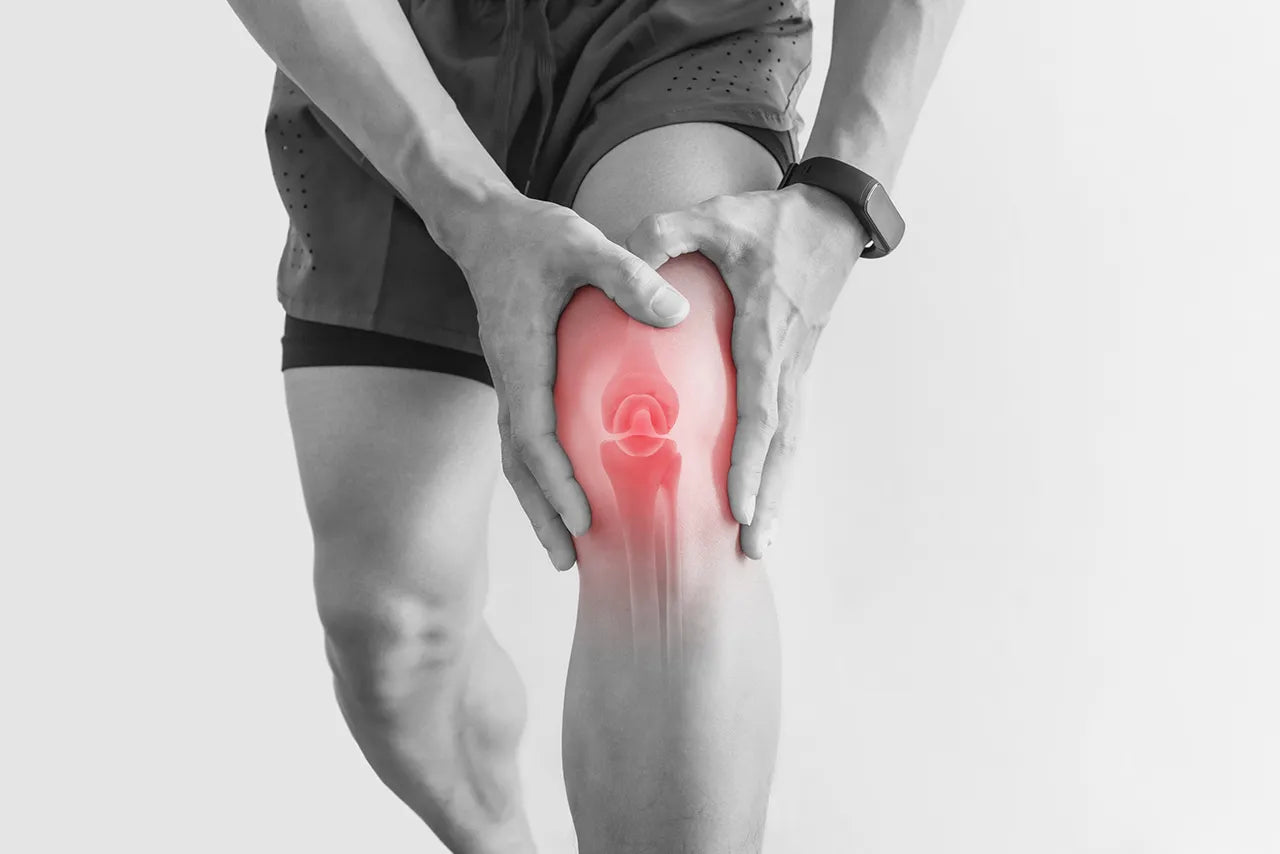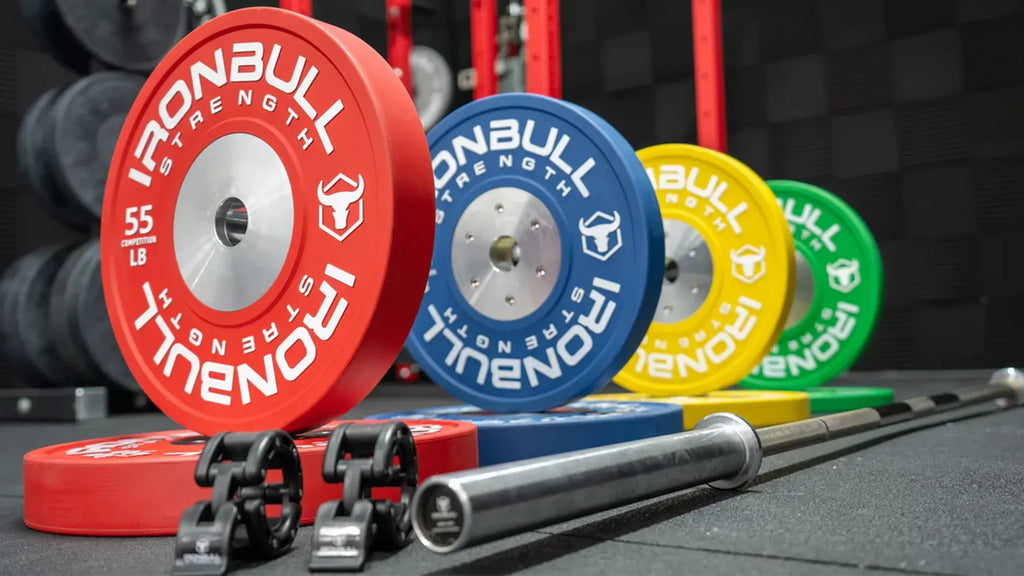Quelles sont les causes des douleurs au genou lors des squats ?

Les causes les plus courantes de douleur au genou lors de l'accroupissement sont :
Les douleurs au genou lors des squats sont fréquentes chez les athlètes, les sportifs et même les personnes sédentaires. Le squat est un mouvement fondamental qui sollicite de nombreux muscles et articulations, dont les genoux. Bien que cet exercice puisse être très bénéfique pour renforcer le bas du corps, une mauvaise technique ou des problèmes sous-jacents peuvent entraîner une gêne au genou lors des squats. L'une des principales causes de douleurs au genou lors des squats est une mauvaise biomécanique.
Un mauvais alignement ou une mauvaise orientation des genoux peut exercer une pression excessive sur l'articulation et les structures environnantes. De plus, des déséquilibres musculaires ou des faiblesses au niveau des quadriceps, des ischio-jambiers ou des fessiers peuvent contribuer à la douleur au genou lors des squats. D'autres facteurs peuvent également déclencher une gêne au genou lors des squats : blessures ou affections antérieures, telles que le syndrome fémoro-patellaire douloureux, les déchirures du ménisque, les entorses ligamentaires ou l'arthrose.
Ces affections préexistantes peuvent rendre l'articulation du genou plus vulnérable aux tensions et aux efforts lors des squats. De plus, un échauffement inadéquat ou une augmentation soudaine de l'intensité de l'entraînement sans préparation adéquate peuvent également entraîner des douleurs au genou lors des squats. Un manque de mobilité et de souplesse au niveau des chevilles et des hanches peut exercer une pression excessive sur les genoux lors des squats profonds.
Facteurs de risque courants de douleur au genou pendant les squats
Concernant les douleurs au genou lors des squats, plusieurs facteurs de risque peuvent contribuer à cet inconfort et nuire à vos performances. Comprendre ces facteurs peut aider à identifier les problèmes potentiels et à prévenir les douleurs au genou. Tout d'abord, une mauvaise mécanique de squat constitue un facteur de risque important. Une mauvaise technique, comme une mauvaise répartition du poids ou un manque de contrôle tout au long du mouvement, peut solliciter l'articulation du genou et les structures environnantes.
Une souplesse insuffisante des hanches, des chevilles ou des quadriceps peut exercer une pression excessive sur les genoux lors des squats. Un déséquilibre musculaire est un autre facteur de risque fréquent. Des muscles fessiers faibles ou des quadriceps tendus peuvent perturber le bon alignement de la rotule, entraînant un désalignement et des douleurs au genou. De plus, une force insuffisante des muscles de la chaîne postérieure (ischio-jambiers et fessiers) par rapport aux quadriceps peut également contribuer à une gêne au genou.
Un volume ou une intensité d'entraînement excessifs, sans repos ni récupération adéquats, constitue un autre facteur de risque de douleur au genou lors des squats. Le surentraînement peut entraîner une inflammation et des blessures de surmenage dans diverses articulations, dont les genoux. Enfin, des pathologies préexistantes comme le syndrome fémoro-patellaire (genou du coureur), l'arthrose ou des blessures antérieures peuvent accroître la vulnérabilité aux douleurs au genou lors des squats.
Tendinite rotulienne : causes et signes
La tendinite rotulienne, également appelée genou du sauteur, est une affection courante caractérisée par une douleur et une inflammation du tendon rotulien, qui relie la rotule au tibia. Cette blessure touche souvent les athlètes pratiquant des activités nécessitant des sauts ou des flexions répétitifs, comme le basket-ball ou l'haltérophilie.
La principale cause de tendinite rotulienne est la surutilisation et la tension du tendon. Lors des squats, une contrainte excessive est exercée sur le tendon rotulien en raison des flexions répétées de l'articulation du genou. Cela peut entraîner de minuscules déchirures des fibres tendineuses et une inflammation ultérieure.
Reconnaître les signes de tendinite rotulienne est essentiel pour une intervention précoce. Les personnes atteintes de cette affection ressentent généralement une douleur sous la rotule lors d'activités de flexion du genou, comme s'accroupir ou monter des escaliers. La douleur peut être légère au début, mais s'aggrave progressivement avec le temps, devenant vive et intense lors d'une activité physique.
De plus, d’autres symptômes peuvent inclure un gonflement autour de l’articulation du genou, une sensibilité au toucher de la zone affectée et une raideur après des périodes de repos prolongées.
Comprendre ses causes et ses signes permet d'identifier rapidement une tendinite rotulienne. Un diagnostic précoce permettra de mettre en place un traitement adapté pour réduire la douleur et favoriser une guérison plus rapide.
Forme et technique appropriées : étapes essentielles pour prévenir les douleurs au genou
Une bonne posture et une bonne technique sont essentielles pour prévenir les douleurs aux genoux lors des squats. Suivre ces étapes essentielles garantit des genoux forts et sans douleur pendant cet exercice.
Tout d'abord, il est crucial de maintenir un bon alignement tout au long du mouvement. Commencez debout, les pieds écartés à la largeur des épaules et les orteils légèrement tournés vers l'extérieur. En descendant en squat, veillez à ce que vos genoux soient alignés avec vos orteils, en évitant toute déviation vers l'intérieur ou l'extérieur.
Deuxièmement, veillez à maintenir une colonne vertébrale neutre tout au long de l'exercice. Gardez la poitrine haute et les épaules en arrière, en sollicitant vos muscles abdominaux pour plus de stabilité. Cela permettra de répartir la charge uniformément sur tout le corps plutôt que de solliciter excessivement vos genoux.
De plus, contrôler la profondeur de vos squats est essentiel pour la santé de vos genoux. Évitez d'aller trop loin si cela provoque une gêne ou une douleur aux genoux. Augmentez progressivement la profondeur au fur et à mesure que vous gagnez en force et en souplesse.
Enfin, échauffez-vous correctement avant de réaliser des squats afin de préparer vos muscles et vos articulations à l'exercice. Intégrer des étirements dynamiques et des exercices de mobilité spécifiques au bas du corps peut contribuer à réduire le risque de douleurs au genou.
Vous pouvez minimiser la douleur au genou en appliquant systématiquement ces techniques de forme appropriées dans votre routine d’accroupissement avec des supports de genou appropriés tout en favorisant la force et la stabilité globales de cette articulation vitale.
Syndrome du dénouement : déclencheurs et indicateurs
Le syndrome de la bandelette ilio-tibiale est une affection fréquente qui provoque des douleurs au genou lors des squats. La bandelette ilio-tibiale (IT) est une épaisse bande de tissu conjonctif qui longe la face externe de la cuisse, de la hanche au tibia. Une tension ou une inflammation de cette bandelette peut entraîner une gêne et une mobilité réduite lors d'activités comme les squats. Plusieurs facteurs peuvent déclencher ce syndrome.
Une cause fréquente est la surutilisation ou le stress répétitif sur l'articulation du genou. Les activités impliquant des flexions et des redressements fréquents du genou, comme la course à pied, le vélo ou les flexions excessives, peuvent irriter la bandelette ilio-tibiale à long terme. Une mauvaise biomécanique et des déséquilibres musculaires peuvent également contribuer à son développement. Reconnaître les indicateurs du syndrome de la bandelette ilio-tibiale est essentiel pour une intervention précoce. Le principal symptôme est une douleur sur la face externe du genou, qui s'aggrave lors des flexions ou d'autres mouvements similaires.
Dans certains cas, les personnes peuvent ressentir une sensation de claquement ou un gonflement autour de la zone affectée. Le traitement du syndrome de la bandelette ilio-tibiale implique généralement :
- Une combinaison de repos.
- Exercices d’étirement pour améliorer la flexibilité des muscles environnants.
- Exercices de renforcement pour une meilleure stabilité.
De plus, modifier les activités pour réduire la tension sur l’articulation du genou peut aider à la récupération.
Déchirures du ménisque : types, symptômes et soins
Les déchirures méniscales sont une cause fréquente de douleurs au genou lors des squats. Le ménisque est une plaque cartilagineuse en forme de C qui amortit les chocs entre le fémur et le tibia. Il contribue à absorber les chocs et à stabiliser l'articulation du genou pendant le mouvement. Cependant, des mouvements brusques de torsion ou de pivotement peuvent entraîner des déchirures méniscales. Il existe deux principaux types de déchirures méniscales : traumatiques et dégénératives.
Les déchirures traumatiques surviennent suite à une blessure aiguë, souvent lors d'activités sportives ou physiques impliquant des arrêts ou des changements de direction brusques. Les déchirures dégénératives, à l'inverse, sont causées par une usure progressive au fil du temps. Les symptômes courants d'une déchirure du ménisque comprennent : douleur, gonflement, raideur, sensation de blocage ou de pincement dans l'articulation du genou, difficulté à tendre complètement la jambe et diminution de l'amplitude de mouvement.
Dans certains cas, un claquement peut également se produire lors de la blessure. En ce qui concerne la prise en charge des déchirures du ménisque, les options thérapeutiques varient selon la gravité de l'incision. Des approches non chirurgicales telles que le repos, la glaciothérapie, les bandages de compression et les exercices de kinésithérapie pour renforcer les muscles autour de l'articulation du genou peuvent suffire pour les déchirures mineures. De plus, un soutien adéquat du genou pendant les exercices, comme le port de genouillères ou de bandages de compression thérapeutiques, peut jouer un rôle crucial pour minimiser la tension sur l'articulation du genou et favoriser la récupération.
Comment les genouillères aident à soulager les déchirures du ménisque dues à la tendinite rotulienne :
Les douleurs au genou peuvent être invalidantes, notamment lors d'activités comme les squats. Heureusement, les genouillères sont devenues très populaires auprès des personnes souffrant de tendinite rotulienne et de déchirures du ménisque. Elles contribuent notamment à la prise en charge de ces affections en assurant une compression. Leur ajustement optimal améliore la circulation sanguine et réduit l'inflammation autour de la zone affectée.
Cette compression soutient également le tendon rotulien et le ménisque, réduisant ainsi la tension et améliorant la stabilité lors de mouvements comme les squats. Un autre avantage des genouillères est leur capacité à réchauffer l'articulation du genou. Garder l'articulation au chaud favorise une meilleure souplesse et réduit la raideur souvent associée à ces blessures. Cette souplesse accrue permet d'effectuer des squats plus confortablement, minimisant ainsi la douleur et l'inconfort.
De plus, les genouillères offrent une protection supplémentaire. Elles agissent comme un coussin entre le tendon rotulien ou le ménisque et les forces externes susceptibles d'aggraver la blessure. Cette protection est particulièrement essentielle lors d'exercices comme les squats, qui sollicitent fortement ces structures. En résumé, les genouillères sont efficaces pour soulager les douleurs au genou lors des squats dues à une tendinite rotulienne ou à une déchirure du ménisque.
Combattre la bursite du genou : causes, symptômes et solutions pour la soulager avec une genouillère
La douleur au genou lors des squats peut être invalidante et toucher de nombreuses personnes, notamment les athlètes et les personnes pratiquant régulièrement une activité physique. Une cause fréquente de cette gêne est la bursite du genou. Les bourses séreuses sont de minuscules sacs remplis de liquide qui amortissent les chocs entre les os, les tendons et les muscles. Lorsque ces sacs s'enflamment suite à des mouvements répétitifs du genou ou à un traumatisme, cela entraîne une bursite.
Les symptômes de la bursite du genou se manifestent généralement par une douleur localisée, un gonflement, une sensibilité et une chaleur autour de la zone affectée. La douleur peut s'aggraver en s'accroupissant ou en exerçant une pression sur l'articulation du genou. L'utilisation d'une genouillère peut s'avérer bénéfique pour soulager la douleur causée par la bursite en s'accroupissant. Ces genouillères offrent compression et soutien à la zone affectée tout en permettant une bonne mobilité pendant l'exercice.
La compression contribue à réduire l'enflure et l'inflammation tout en assurant la stabilité de l'articulation. Outre le port d'une genouillère, d'autres mesures de soulagement incluent le repos, la thérapie par la glace ou la chaleur, la prise d'anti-inflammatoires sans ordonnance (sous surveillance médicale) et des exercices d'étirement doux pour améliorer la souplesse et renforcer les muscles environnants.
Lutte contre la maladie d'Osgood-Schlatter : comprendre la douleur juvénile au genou
La maladie d'Osgood-Schlatter est une cause fréquente de douleurs au genou chez les jeunes athlètes, en particulier ceux pratiquant des sports nécessitant des mouvements répétitifs du genou, comme les squats et les sauts. Cette affection touche principalement les adolescents pendant leurs poussées de croissance, période où les os, les muscles et les tendons se développent rapidement. Le principal symptôme de la maladie d'Osgood-Schlatter est une douleur et une sensibilité juste sous la rotule, là où le tendon rotulien s'attache au tibia.
Les squats ou toute activité sollicitant les quadriceps peuvent aggraver cette gêne. Il est crucial pour les parents, les entraîneurs et les jeunes athlètes de comprendre cette affection. Il est essentiel de reconnaître que la maladie d'Osgood-Schlatter n'est pas une affection grave ni chronique. La plupart des personnes en guérissent avec l'arrêt de la croissance osseuse et la maturation physique. Le repos et une modification temporaire des activités sont recommandés pour gérer la douleur associée à la maladie d'Osgood-Schlatter.
L'application de compresses de glace pour réduire l'inflammation peut également apporter un soulagement. Des exercices d'étirement ciblant les quadriceps peuvent également contribuer à atténuer les symptômes.
Soulager les douleurs liées à l'arthrose du genou : informations et symptômes
Une douleur au genou en position accroupie peut être un signe d'arthrose du genou, une affection courante qui touche des millions de personnes dans le monde. Comprendre les mécanismes et les symptômes associés à l'arthrose du genou peut aider les personnes à mieux gérer leur douleur et à rechercher un traitement adapté. Un aspect essentiel de l'arthrose du genou est son apparition progressive. Cette affection se développe généralement au fil du temps, souvent en raison de l'usure des articulations.
Les personnes ayant des antécédents familiaux d'arthrite ou ayant subi des blessures au genou sont plus susceptibles de développer cette affection. Reconnaître ces facteurs de risque peut faciliter un dépistage et une intervention précoces. Les symptômes de l'arthrose du genou comprennent une raideur articulaire, un gonflement, une sensibilité et une difficulté à bouger le genou atteint. Les personnes atteintes peuvent ressentir des douleurs lors d'activités impliquant des flexions ou des flexions, ce qui limite leurs tâches quotidiennes ou leurs activités physiques.
Bien qu'il n'existe pas de remède contre l'arthrose du genou, diverses options thérapeutiques peuvent contribuer à soulager les symptômes. Parmi celles-ci, on peut citer des exercices de kinésithérapie visant à renforcer les muscles environnants, des stratégies de gestion du poids pour réduire la tension au niveau du genou, des médicaments pour soulager la douleur et, dans les cas graves, des interventions chirurgicales comme le remplacement articulaire.
Comment les genouillères aident à lutter contre la bursite, la maladie d'Osgood-Schlatter et l'arthrose du genou pendant l'entraînement
Les genouillères peuvent soulager efficacement les douleurs au genou lors des squats, notamment chez les personnes souffrant de bursite, de la maladie d'Osgood-Schlatter et d'arthrose du genou pendant l'entraînement. La bursite est une inflammation des bourses séreuses ; des sacs remplis de liquide amortissent les articulations. Lors des squats, ces sacs peuvent devenir irrités et douloureux. Les genouillères offrent compression et soutien à la zone affectée, ce qui contribue à réduire l'inflammation et l'inconfort.
Les bandages aident également à stabiliser l'articulation du genou lors des mouvements, évitant ainsi une tension excessive sur les bourses séreuses. La maladie d'Osgood-Schlatter touche fréquemment les adolescents pratiquant un sport ou des activités impliquant des flexions répétées du genou, comme les squats. Les bandages de genou offrent un soutien externe au tendon rotulien, réduisant ainsi la tension exercée sur la tubérosité tibiale à son point d'insertion. Cela peut soulager la douleur associée à cette affection et permettre aux personnes atteintes de poursuivre l'entraînement sans aggraver leurs symptômes.
L'arthrose du genou est une maladie dégénérative des articulations qui provoque une dégradation du cartilage du genou. Les flexions peuvent exercer une pression supplémentaire sur ces articulations fragilisées, entraînant douleurs et raideurs. Les bandages pour genou offrent une compression pour réduire le gonflement et améliorer la circulation sanguine, tout en assurant la stabilité de l'articulation du genou pendant l'effort.
S'accroupir en toute sécurité pour éviter les douleurs au genou
Le squat est un exercice populaire qui offre de nombreux bienfaits, comme le renforcement du bas du corps, l'amélioration de la mobilité et la promotion de la forme physique générale. Cependant, il est crucial de privilégier la sécurité lors de la pratique du squat afin de prévenir les douleurs aux genoux et les blessures potentielles. En adoptant une posture correcte et en prenant les précautions essentielles, vous pouvez protéger vos genoux tout en profitant pleinement de cet exercice pratique. Tout d'abord, une posture correcte est essentielle pour pratiquer le squat en toute sécurité.
Commencez par aligner vos pieds à la largeur des épaules, les orteils légèrement pointés vers l'extérieur. Gardez la poitrine haute et les épaules en arrière, et contractez vos muscles abdominaux tout au long du mouvement. Cela permet de répartir uniformément la charge sur le bas du corps et de réduire la tension au niveau des genoux. Ensuite, faites attention à la profondeur de vos flexions lorsque vous vous accroupissez. Même s'il peut être tentant de descendre le plus bas possible, il est essentiel de ne pas dépasser une amplitude de mouvement qui pourrait provoquer une gêne ou une douleur aux genoux.
Augmentez progressivement l'intensité de l'exercice tout en veillant à maintenir une posture correcte. De plus, un échauffement avant les squats peut aider à préparer les articulations et les muscles à l'exercice. Des étirements dynamiques comme les balancements de jambes ou les fentes peuvent améliorer la circulation sanguine et la souplesse du bas du corps. Enfin, pensez à la récupération. Un repos adéquat entre les séances de squat permet aux muscles et aux tissus conjonctifs de bien récupérer avant de reprendre des entraînements intenses.


